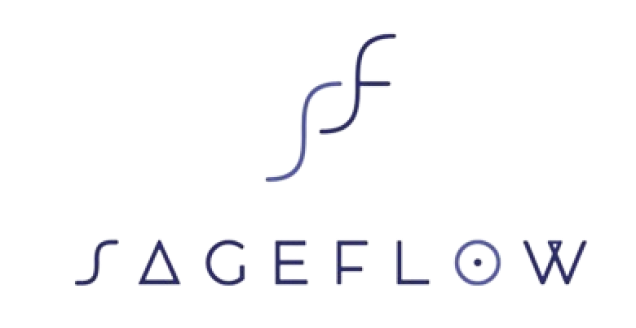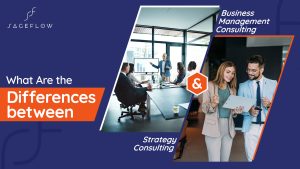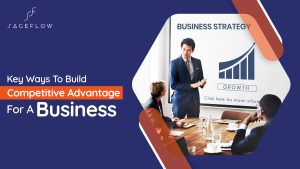In today’s competitive job market, drawing the best available talent is challenging. This directly influences a company’s growth. Only through qualified hiring can you consistently position your organisation for success.
This ultimately underscores the need for building a capable talent acquisition team to locate and hire skilled employees. They will plan a long-term strategy to prepare your organisation for the future.
Well-planned talent acquisition strategies helps you hire the right people who align with your company culture. If you own a company and are looking for ways to identify talent with a good plan, then this is the right place.
This blog dives into what talent acquisition really means, why it’s vital, and the 10 proven strategies you need to find top talent.
What is Talent Acquisition?
Talent acquisition (TA) is the process of attracting, finding, and hiring skilled individuals. The process can help identify workers with the right skills to achieve a company’s long- and short-term goals.
Traditional recruitment methods are primarily focused on filling vacancies within the firm. Compared to them, TA focuses on building relationships with potential candidates.
The aim is to source, evaluate, and attract talent while boosting the company’s brand. Companies focus more on developing a talent pipeline for the future. The talent acquisition strategy handles workforce management, employer branding, and candidate experience.
TA teams often work with human resources to design hiring strategies for sustainable growth.
Why is Talent Acquisition Important?
Talent acquisition and the hiring process go hand in hand, as the ultimate goal is to hire the right candidate. The success of the hiring process depends on the organisation’s talent management strategies.
Effective talent acquisition helps companies secure skilled individuals while reducing turnover risk. It supports businesses by ensuring that only qualified candidates fill critical roles.
TA also impacts your company’s efficiency and employee engagement. It helps build a positive employer image, which attracts more qualified candidates.
The following are some of the top reasons why talent acquisition is essential –
- For building a competitive workforce.
- Revamping the employer’s brand image.
- Increasing the firm’s cost efficiency.
- Helps drive innovation and productivity through skilled employees.
- Builds a strong pipeline of future leaders and talent pool.
Talent Acquisition Vs Recruitment
When it comes to building a strong workforce, talent acquisition and recruitment go hand in hand. However, there is a significant distinction in the hiring approach and method.
The requirement focuses on more transactional processes aimed at filling gaps in the workplace. TA, on the other hand, is proactive and strategic.
It involves long-term planning, employee analysis, and building relationships with candidates. Talent acquisition ensures continuous sourcing of talent to prepare the organisation for current and future demands.
The following points explain how both methods approach various responsibilities –
1. Sourcing
The recruitment process focuses on finding candidates for job openings through job portals. TA proactively identifies and approaches skilled talent.
2. Screening
Talent acquisition screens candidates based on long-term organisational needs. A recruiter screens the individuals based on immediate requirements.
3. Interviewing
Recruitment personnel interview candidates to match their suitability for the job. TA conducts an interview emphasising the holistic benefits.
4. Talent Assessments
Talent acquisition seeks a comprehensive evaluation of the job seeker. Recruitment uses basic assessments to find the right fit.
5. Candidate Selection
For recruiters, individuals who meet the current criteria are a good fit for the role. On the other hand, the candidates who align with the long-term goals are usually preferred by the TA.
6. Employer Branding
Talent acquisition focuses on building and promoting the employer’s brand. At the same time, recruiters have no such goals.
7. Onboarding
TAs are usually involved in the onboarding process to help new hires feel comfortable. Recruiters don’t partake in any process beyond hiring.
What is Talent Acquisition Strategy?
A talent acquisition strategy is a proactive plan that guides an organisation in attracting and hiring top talent. It prioritises workforce planning that analyses current and future hiring needs.
TA strategies check where and how candidates were sourced and assess their experience throughout the process. Whether you’re a new company or a global giant, mastering talent acquisition planning & strategy can bring success.
What Are the Types of Talent Acquisition Strategy?
Talent acquisition strategies can vary depending on organisational priorities, industry, and workforce needs. Hence, creating a strong plan that aligns with your company’s needs and vision is essential to prevent talent shortages.
There are multiple approaches to creating an effective talent strategy. Among the approaches, the 4B method is fruitful.
- Build – It involves the in-house training or development of talented employees. By partnering with schools, offering internships, and certificate programs, you can train your existing workforce for the senior roles.
- Buy – This method focuses on buying talent from external markets. You basically approach personnel in senior roles at the competitor organisation. Offering an attractive value proposition automatically earns the trust of candidates seeking new roles.
- Bridge – Businesses can use talent analytics to find employees who are suitable for promotions or future opportunities. In this strategy, companies leverage development and learning programs to enhance their employees’ competencies.
- Borrow – It encourages part-time, freelance, or temporary workers to try unique roles and projects. This method is perfect for companies that need to fill positions immediately. However, they are not interested in long-term associations.
The Benefits of Effective Talent Acquisition Strategies
Implementing the right talent acquisition strategies can help you efficiently find and onboard candidates. It is beneficial for businesses seeking rapid growth.
TA strategies are beneficial when hiring for crucial roles, such as leadership, senior engineering, and technology expertise, as well as other high-ranking positions. These roles require careful assessment and may take more than 6 months to find the right fit.
The following are the benefits that effective talent acquisition strategies deliver –
- Reduces hiring time through streamlined processes and talent pipelines.
- Helps reduce cost by minimising the chances of mis-hires
- Removes your reliance on external recruiters for urgent hiring needs.
- Delivers exceptional hiring experience to candidates, enhancing the employer’s reputation.
- Improves workforce quality by attracting talent that aligns with the office culture and skills.
- Boosts employee engagement and retention by offering good propositions.
Challenges Organisations Face When Attracting and Retaining Talent
Finding the right talent has always been challenging. Companies must navigate the job market amid workforce shortages.
To stay ahead, businesses have to rethink their hiring strategies, accept technologies, and build a strong employer brand.
Moreover, the rise in remote work has intensified competition, making it harder for companies to find top professionals.
Here are the common challenges that businesses encounter in talent acquisition:
- Skills Shortages – Having the constant difficulty of finding personnel with advanced expertise.
- Increasing Competition – Multiple companies are offering better opportunities, leading to a loss of top candidates.
- Candidate Expectations – Nowadays, the candidates prefer flexibility, learning scope, and meaningful work. Failing to fulfil these demands leads to a delay in hiring.
- Employer Reputation – Companies with lower retention rates often have a poor reputation. Negative perceptions about the brand can restrict the applicant’s interest.
- Salary Expectations – Talent acquisition faces the challenge of aligning the company’s compensation budget with the demand for skilled candidates.
- Retention Issues – Even after attracting good candidates, companies face the challenge of retaining them. Even a minor inconvenience can cause a potential candidate to reject the offer.
10 Successful Talent Acquisition Strategies
As the market evolves, companies must adapt to new hiring practices. For this, they have to review and refine their applicant selection methods routinely.
Here are the top recruitment strategies to help you make sure that every step of the TA process matches your company’s principles.
1. Form a Strong Employer Brand
Try highlighting your company’s culture, values, and ethics on social sites. Sharing employee success stories on career sites or in recruitment materials would attract top candidates.
2. Increase Employee Referrals
Encourage your employees to refer qualified candidates by offering incentives. Referrals often help discover trustworthy, skilled talent. Existing employees recommend individuals who are a good fit for the company, keeping their reputations on the line.
3. Use Data and Analytics
Implementing recruitment metrics like cost-per-hire, time-to-hire, and quality scores can be helpful. These metrics will provide data to enhance your hiring process continuously. You can easily identify the loopholes and areas of improvement.
4. Focus on Talent Pipelining
Try building relationships with candidates even before an opening arises. Making connections with them using social media or talent communities will offer you an active pool of talent. By building connections, you pave the way for acquiring good candidates during immediate requirements.
5. Write Strong Job Descriptions
Write the job requirements clearly and inclusively. Adding role-specific descriptions helps potential candidates reach the TA team easily. Moreover, it would filter out mismatches, saving you time and funds.
6. Take the Help of Sourcing Channels
Make the most of sourcing channels such as social media, job boards, and forums. Running a job drive or campus hiring can also help reach a wider talent pool.
7. Elevate Candidate Experience
Talent acquisition is all about making the hiring process smoother and more straightforward. Hence, it becomes essential to streamline the application process, maintain transparent communication, and provide timely feedback. These practices make the candidates feel valued.
8. Support Diversity and Inclusion
Companies should implement hiring practices that promote diversity. Candidates prefer firms that value equal opportunity and respect all genders. Practising an equal evaluation method builds a more advanced workforce.
9. Implement Technology in Hiring Processes
Using AI sourcing tools, applicant tracking systems (ATS), and other technologies speeds up the hiring process. Utilising video interviews would make the hiring process convenient.
10. Align Goals with the Trends
Align your talent acquisition efforts with changing business goals to stay ahead of the trend. Try to keep up with the market drifts and economic developments as well. This will help you set the proper hiring budget and find a qualified candidate.
How to Measure the Success of Talent Acquisition for Your Organisation?
Measuring the efficiency of talent acquisition depends on tracking multiple KPIs and metrics.
This would help evaluate how well the TA process works and identify the immediate changes that need to be implemented.
Regularly analysing these factors will help align your talent plans with the company’s objectives:
- Check the average time taken to fill the open positions.
- Track the performance and retention capacity of the new hires.
- Ask candidates for feedback to understand their experience.
- Make a percentage of the accepted job offer rate against the total offers made throughout the year.
- Make a note of the productive recruitment channels or sources that offer the most benefits.
Partner With SageFlow to Attract and Retain Top Talent
Building an effective talent acquisition strategy is a complex but essential process. Hiring and retaining good employees will help your company gain long-term success and sustainability.
The foundation for building a talent pool lies with the talent acquisition team. A lack of knowledge in this area can enhance the chances of employee attrition.
In this regard, taking guidance from SageFlow empowers your business with expert insights, strategy, and ensuring you have a partner for the journey.
We help you understand the best ways to hire and retain talent. Our comprehensive approach enables you to build your branding and enhance candidate engagement.
We also offer suggestions on business improvement techniques and share ways to develop talent management skills.
If you’re ready to future-proof your workforce through a streamlined process, then SageFlow will be your partner.








